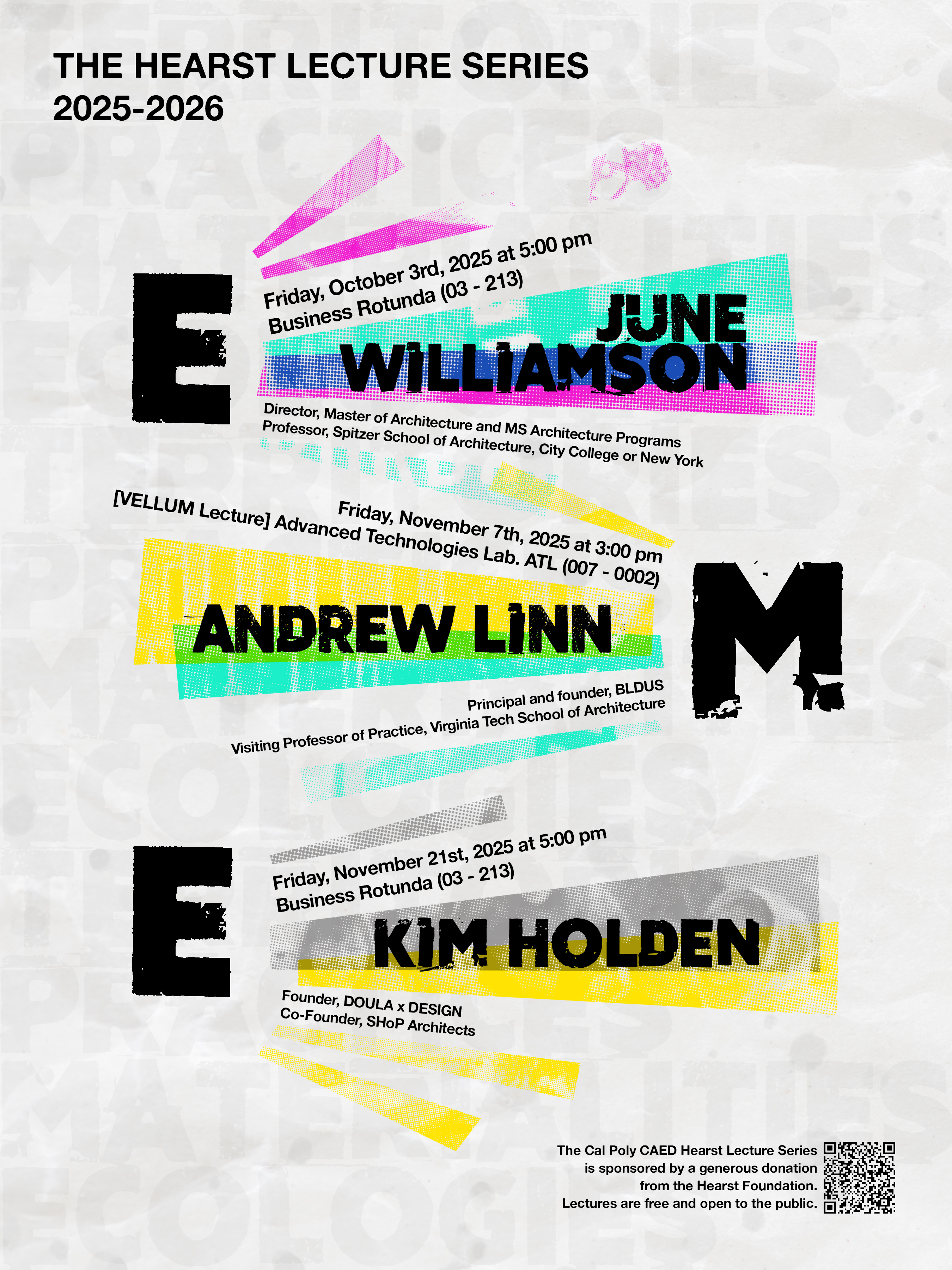Monitors Elevate the Landscape Architecture Senior Studio Experience
by Caroline Roistacher
The Landscape Architecture (LA) Department recently equipped both senior studios with plug-and-play 32-inch monitors. Each studio has 20 desks, equaling a total of 40 monitors.
LA Department Head Beverly Bass described how seniors produce most of their graphics on their personal laptops. Students often have access to the software on their laptops that they need to bring their projects to fruition, but the small screens are a problem. These graphics are often complex and large and require a much bigger viewing area than is provided on a typical laptop.
Students have access to the computer labs in the department, but they are often being used for instruction and not accessible when students need them. As such, seniors greatly benefit from having monitors at their desks to plug their laptops into.

Freddy Kafka, Justin Li, Aliyah Madriaga, Jack McCarthy, Alex Snyder, Noah Carl, Bradley Atnip and Katie Vlick in David Watts’ landscape architecture senior studio.
Many of these seniors are currently working on their individual senior projects. The new monitors help them in various ways.
Jack McCarthy is a fifth-year student working on planning a grizzly bear exhibit for the Santa Barbara Zoo.
McCarthy described how he currently uses Photoshop technologies for this project, specifically Photoshop AI, which he believes is a useful tool to fast-track many tasks. After this stage, McCarthy will move into 3D modeling, for which he is excited to have the monitors.
“I worked in my internships with monitors and that's the way you work in the industry,” McCarthy said. “I'm really excited that we get to have that for our senior studio.”
McCarthy also believes that monitors make it far easier to showcase work. Instead of showing people his work on a smaller screen, such as his laptop or iPad, he can magnify and show them on a wider scale, which makes things much simpler.
Mari Takata is another LA senior working on her senior project. She is redesigning the San Quentin prison. She hopes to humanize the prison system, as she believes prisoners are stripped of many rights.
Takata said her project is all digital. Since her laptop is small and lacks power, it caused her technical issues when working on her project and made it difficult to display to an audience. Therefore, she is excited to have the new monitors to help her share ideas with others.

Left: Noah Carl working on his project, aiming to create an ecologically centered community within a 200-acre industrial train yard in downtown Los Angeles by integrating sustainable housing with the ecological restoration of the Los Angeles River.
Right: Jessica Baiza working on her project ConnectED Center, a proposal for an innovative nationwide initiative, envisioning multi-use trade schools tailored to their communities and neurodivergent populations, emphasizing adults with autism.
Fifth-year Karis Lawson is doing a retrofit project, redesigning a Santa Cruz, California, mall. Lawson aims to address many problems that lie with retrofit projects failing to put in character or any elements that align with each community.
“I want to make an example of how we should go about retrofit projects…how you can redo something to not only fit multi-use and make sense in that area but also go along with the community that's already there,” Lawson said.
Up until now, Lawson has been using her Macbook to design her project and work with the software that Cal Poly provides. She has been working on this project since the beginning of spring 2023 and expects to wrap it up in winter 2024.
“I compared my computer screen to the monitors today, and I was like, ‘Oh my goodness,’” Lawson said. “It's like four and a half times the size of my computer screen. That's really nice.”
Lawson finds organizational value in the monitors. She enjoys having separate screens, where she could, for instance, have Photoshop open on the monitor and Chrome open on her computer. This keeps her workflow moving smoothly.
Lawson described how the computers that they had before were outdated and slow. The monitors are much faster, and they can run better programs for the students to utilize.

Left: Erika Murase working on her senior project.
Right: Sasha Matienzo working on “Olympic Revival", a series of solutions to implement within existing and future stadiums that can tackle the environmental strain of their construction while providing social amenities within the urban sphere.
Maya Amyx is working on a project about envisioning the future of the land that oil refineries sit on and how we can clean up and repurpose the land after oil is shut down.
Amyx describes how running programs such as Auto CAD, GIS and Rhino can be overwhelming for her 2017 Apple Laptop. The space in the monitors helps solve this issue.

Aliyah Madriaga and Justin Li working on their senior projects.
Bradley Atnip is redesigning his high school with the goals of mitigating food insecurity and promoting outdoor accessibility to students. Atnip sees the monitors as a source of motivation for staying in the studio with his classmates.
“I have a monitor at home and usually if I want to be by myself and focus I'll work at home with my monitor, but here everyone has a monitor now, that's even nice than the one I have,” Atnip said. “It’s a really good experience...you can bounce off ideas by looking at each other's monitors.”
To support students and the Landscape Architecture Department, please consider donating by clicking Give Now below, as it allows the department to continue providing critical tools and technologies for students to do their best work.



